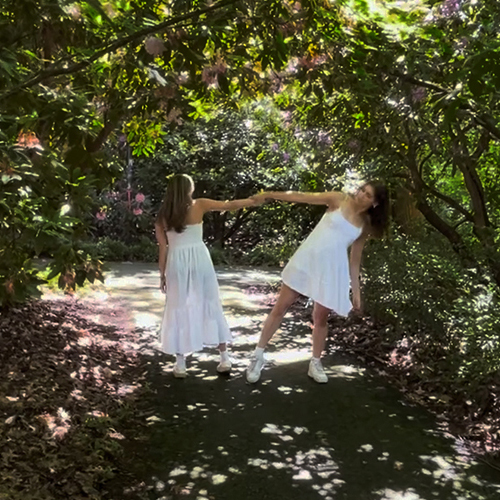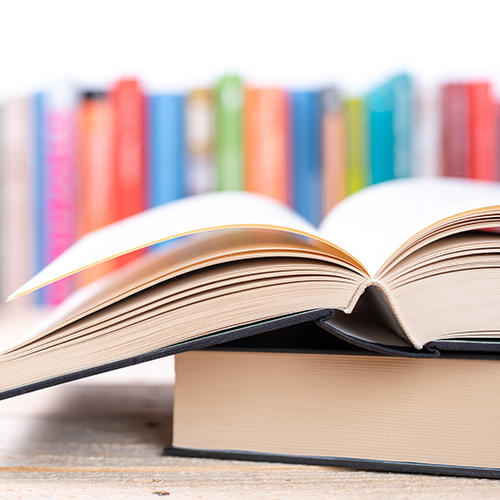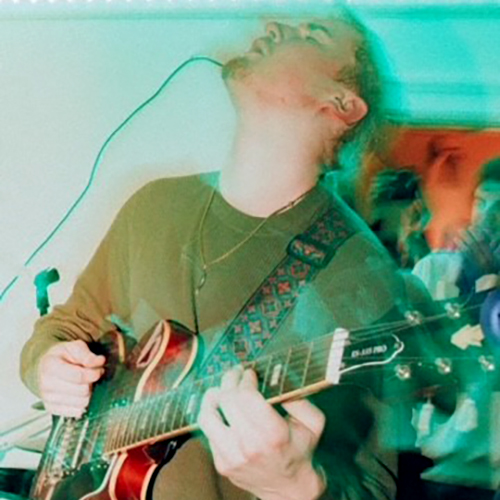A marimba sized for a giant. Suspended glass domes, artfully arranged. A Chromelodeon, a Kithara, and a Harmonic Canon. These are just a few of the one-of-a-kind instruments that inventive composer Harry Partch (1901-1974) created to bring his music to life.
Now the instruments—more than 50 in all—have found a temporary home in the UW School of Music, providing a rare opportunity for faculty and students to perform Partch’s music. Audiences can experience Partch’s unique compositions at three events in May (details at right).
What makes the music special? First there’s Partch’s tuning system. His instruments can produce pitches far beyond what a piano or other traditional Western instruments allow. Some can produce any pitch imaginable. Then there’s the engaging physicality of Partch’s work, which keeps performers in constant motion.

“One of the things I love about his music is that the body and the visceral response to the sound is absolutely integral to the experience, both for the performer and listener,” says graduate student Kaley Lane Eaton, currently rehearsing two Partch compositions. “I also love the humor in his music. The best part is being able to play such whimsical and honest music on such whimsical and honest instruments.”
Richard Karpen, director of the School of Music and Aura Morrison Endowed Professor, regularly teaches Partch’s music to his composition students. “Harry Partch is not the only person who has built instruments or done research into tuning systems,” says Karpen, “but he’s the only one who built his own orchestra and the music is so great that we’re compelled to keep playing it on these instruments. The quality of his music is what’s really important.”
Karpen’s own introduction to Partch’s music dates back to the early 1970s, soon after the album The World of Harry Partch was released. “Listening to his music for the first time was a transformational moment for me,” Karpen recalls. “It was so powerful, the life force in it. My own music has definitely been influenced by his.”
Three years ago, Karpen dreamed about bringing Partch’s music to campus so that students could experience it in live performance. He had no idea where the instruments might be or whether anyone still knew how to play them. When he learned that the instruments were at Montclair State University in the care of Dean Drummond, a professor and second-generation student of Partch, Karpen invited Drummond and his students to perform at the UW.

Attending that 2012 performance, which featured about half of Partch’s instruments, UW graduate student Josh Archibald-Seiffer was surprised by the familiarity of the music. “Despite some of the theoretical complexities of the tuning systems, the music isn’t completely esoteric,” Archibald-Seiffer says. “In fact it’s the opposite. It feels like something you’ve heard before—but not quite. The result is, for me at least, like something very old that has only recently been rediscovered.”
One of the musicians who performed in that 2012 concert was Charles Corey, now a UW School of Music research associate. Corey knew nothing about Partch when he arrived at Montclair State as an undergraduate, but he was intrigued by the instrument collection. “There were instruments I had never imagined before,” he recalls. “I immediately knew this was what I wanted to spend my time on.”
I feel like such a badass as a little lady up there banging these massive boards with massive mallets and moving my body like a crazy person. Any instrument that allows me to do that is an instrument I love.
Corey continued to study Partch’s music as a graduate student and took over as director of the Harry Partch “instrumentarium” when Dean Drummond passed away in 2013. At that point, the collection was in search of a new home, leading Karpen to propose a residency at the UW—for both the instruments and Corey. “Just the instruments without Chuck [Corey] would be meaningless,” says Karpen, who has been impressed by Corey’s knowledge of all things Partch. “The instruments and Chuck are a package deal for us.”
UW students have jumped at the chance to tackle Partch’s work. This year they are using just eleven of Partch’s instruments—most of the collection remains in storage due to lack of dedicated space—but those eleven are plenty challenging. “Learning an unfamiliar instrument, trying to be expressive using tools that you only have a tenuous grasp on, is sort of like trying to woo someone in a language you took for one semester in college a few years ago,” says Archibald-Seiffer. “The technique comes, though. Chuck has assured us of that all along the way, and he was definitely right.”

Many of the instruments require athleticism. Some require a player to cover about seven feet of floor space in two seconds, leaving it to the musician to finesse that movement. “It’s kind of their task to create an interesting, almost athletic movement instead of clumsily hitting one note and then another,” says Corey.
Eaton, who plays the Bass Marimba in one Partch composition and the Harmonic Canon in another, embraces the challenge. “I feel like such a badass as a little lady up there banging these massive boards with massive mallets and moving my body like a crazy person,” she says. “Any instrument that allows me to do that is an instrument I love.”
Karpen is thrilled that students and audiences have this opportunity to experience Partch’s music. Yet looking ahead, he is concerned about the future of the Partch instrument collection. The UW’s funding runs out in 2016 unless a generous donor comes forward to keep the collection—and Corey—at the University.
“Having the instruments here is stunning and shocking to me,” says Karpen. “Beyond my personal excitement about the collection, I feel a duty to this music. Artists, like scientists, owe what we do to previous generations. Imagine if a whole set of knowledge on which modern physics is based was in danger of disappearing. It’s that important to us to preserve Harry Partch’s music.”
Want to support efforts to keep the Harry Partch Instrument Collection at the UW? Contact Michael Toomey, constituency relations officer for the School of Music, at toomeym@uw.edu or (206) 543-1221.
For more information about composer Harry Partch and his music, check out the UW Today article and video, and visit the Harry Partch website.
More Stories

Dancing Across Campus
For the dance course "Activating Space," students danced in public spaces across the University of Washington's Seattle campus this spring.

Read or Listen to Faculty Favorites
Looking for book or podcast recommendations? We asked faculty who've been featured in Perspectives newsletter during the past academic year to suggest a personal favorite.

Celebrating Contemporary Indigenous Music
Markus Teuton, a musician and citizen of Cherokee Nation, explores contemporary Indigenous music through his academic work and as host of “Indigenous Jazz,” a radio show.